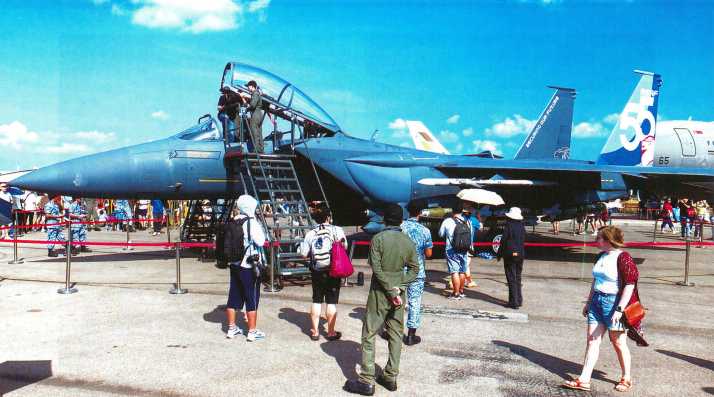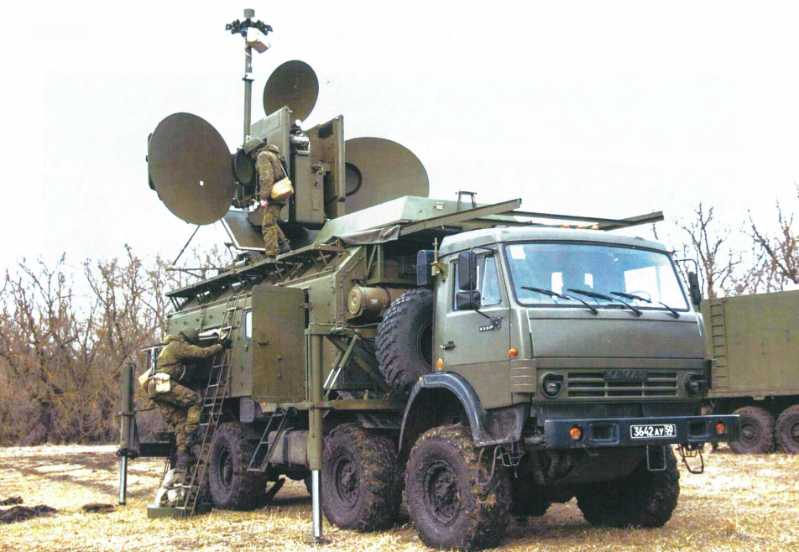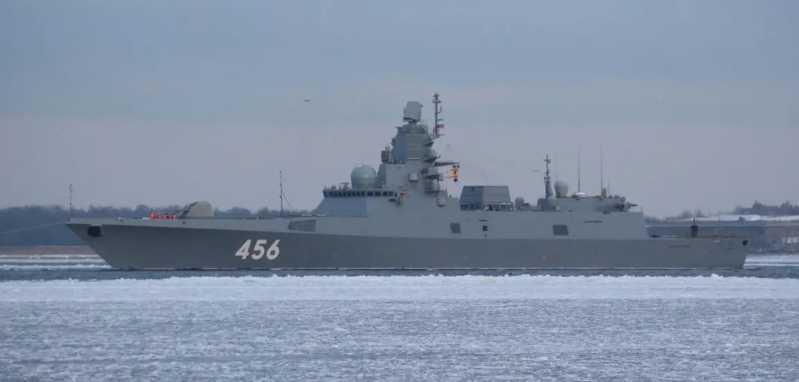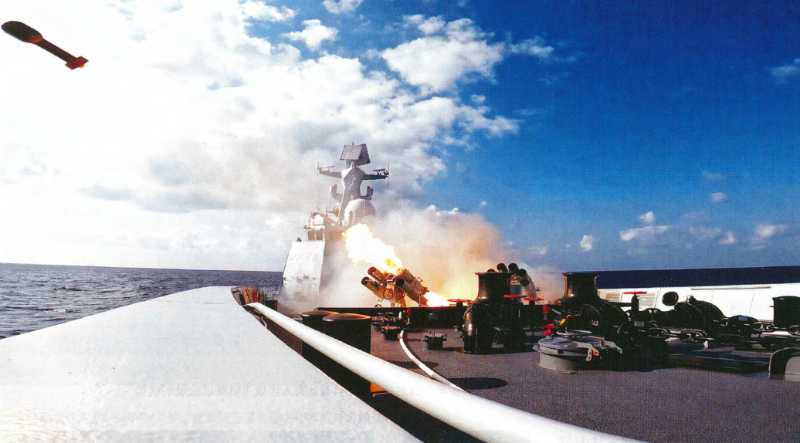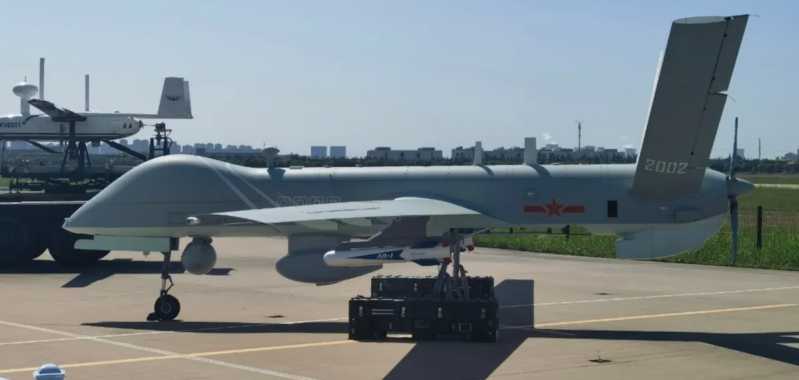In the static exhibition area of this year’s Singapore Air Show, the first thing you see when you enter is the F-15SG fighter jet of the host Singapore Air Force. This aircraft has also been painted with the 55th anniversary commemorative livery of the Singapore Air Force on the outside of the vertical tail, which looks very beautiful.
Unlike the German Air Force, which would cause trouble even if it entered the cargo hold of an A400M transport aircraft, the Singapore Air Force is very open. Not only are various combat pods and weapons and ammunition mounted on this display aircraft, so that everyone can actually feel the combat status of the aircraft, but also boarding stairs are set up on both sides of the cockpit, so that the audience can observe the cockpit of the aircraft up close, and even sit in it to experience the feeling of flying a fighter. The visiting experience is very good.
F-15SG Overview
F-15SG is a multi-purpose fighter developed by Boeing in 2003 to bid for the Singapore Air Force’s "Advanced Fighter Update" plan. The "SG" in the name stands for Singapore, which is the international abbreviation of Singapore in English.
In 2006, after three years of selection, F-15SG defeated many competitors and became the final winner, winning the Singapore Air Force’s big order. In addition to the traditional friendship between Singapore and the United States, the ability of F-15SG itself is the key to its winning the bid. Because before the appearance of the F-15SA of the Royal Saudi Air Force, the F-15SG of the Singapore Air Force was the most advanced model in the F-15 family at that time, and was once called the most powerful F-15.
The Singapore Air Force began to officially receive F-15SG fighters in 2009. The initial order was only 24. After a period of use, Singapore was very satisfied with the performance of the aircraft, so it imported 16 F-15SG fighters in two batches, bringing the total number of equipment to 40. However, due to the small land area of Singapore, it is not conducive to daily training. At the same time, out of the idea of preserving strength, this batch of F-15SGs are not all placed in the country, but a large part will be rotated to the United States and some allies to avoid being wiped out in wartime.
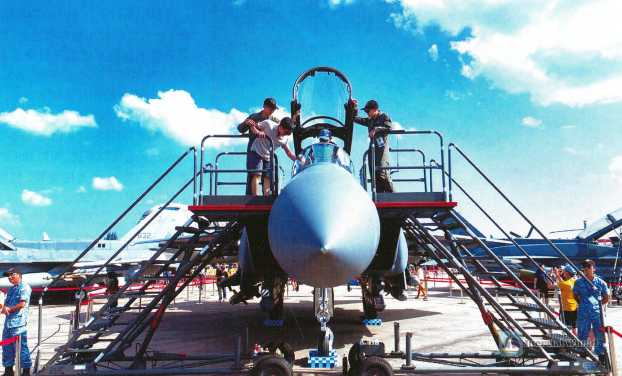
Advanced performance
Compared with the early models of the F-15, the F-15SG uses a fuselage that has been optimized and planned from scratch, and the fuselage structure and potential have been greatly improved. The aircraft is 19.43 meters long, 13.05 meters wide, 5.65 meters high, with a wing area of 56.5 square meters, an empty weight of about 14 tons, a maximum take-off weight of about 37 tons, and a bomb load of more than 10 tons. It is definitely a "bomb card".
In terms of the power system, the F-15SG is equipped with two F110-GE-129 high-thrust turbofan engines. Compared with the previous F101-GE-100 engine, the new engine has been optimized in terms of bypass ratio and pressure ratio, and the thrust has been further improved, allowing the maximum thrust of the F-15SG to reach 2x129 kilonewtons. The powerful thrust enables the F-15SG fighter to accelerate from Mach 0.8 to Mach 2.2 in three minutes, and also allows the aircraft’s maximum flight speed to reach Mach 2.5, the practical ceiling to reach 15,000 meters, and the combat radius to reach 1,967 kilometers. The flight performance is very excellent.
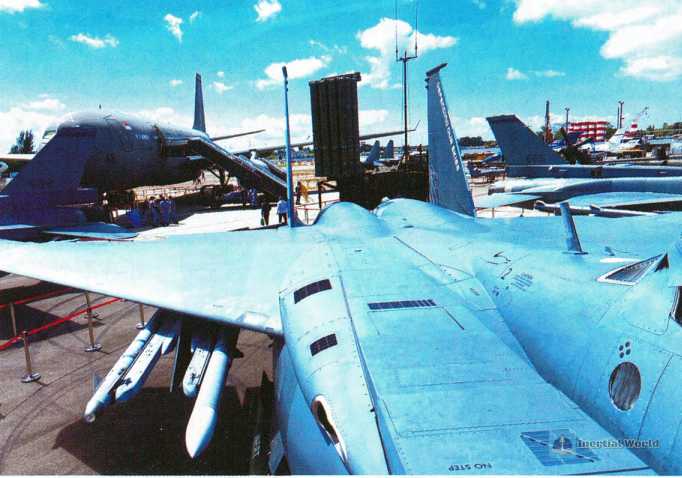
Inside the large-size radar cover of the F-15SG nose, a Raytheon AN/APG-63(V)3 multi-mode active phased array radar is installed. Compared with the APG-63(V)1/2 pulse Doppler radar equipped on previous F-15 models, the new radar has greatly improved its sensitivity, resolution, anti-interference ability and multi-task processing ability through AESA technology. It can simultaneously detect, identify and track multiple air and ground targets at longer distances, and can continuously track targets and share information. It also has the ability to use more advanced air-to-air missiles, which effectively improves the combat performance of the F-15SG.
In addition to the fire control radar, the F-15SG, like the Korean F-15K, is equipped with the AN/AAS-43 "Tiger Eye" infrared search and tracking (IRST) pod and A N/A on the pylons below the engine inlets on both sides. AQ-33 "Sniper XR" targeting pod to improve the aircraft’s ability to search for targets and use precision-guided weapons.
In terms of avionics systems, the F-15SG is not only equipped with a head-up display and ultra-high frequency communications, but also has tactical navigation systems and instrument landing systems, AN/AWG-20 fire control systems, AN/ASK-6 atmospheric data computers and other equipment. The F-15SG’s Multi-Function Information Distribution System Low-Bandwidth Terminal (MIDS-LVT) is also equipped with a Link-16 data link system that can be interconnected with all Singapore Air Force tactical aircraft, including the G550W airborne early warning aircraft.

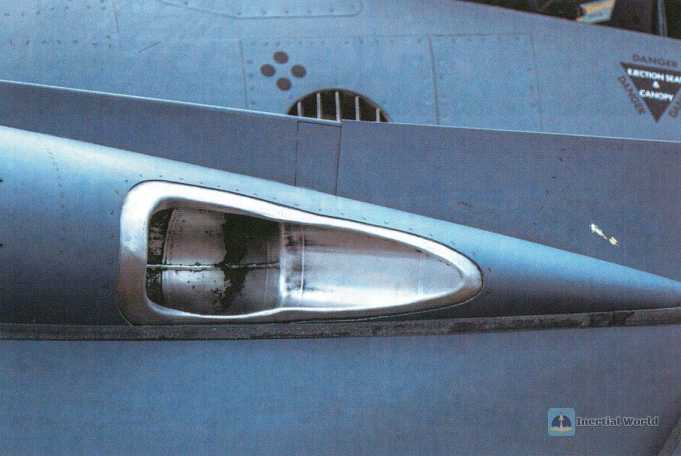

These advanced avionics equipment are of great help to F-15SG. Through these advanced avionics systems, F-15SG can track some target signals that are covered by the cluttered communication equipment on the ground. Moreover, the friend-or-foe identification and electronic countermeasures equipped by F-15SG can not only provide the source of dangerous targets for F-15SG, but also automatically counter dangerous targets. In addition, the pilots of F-15SG are equipped with JHMCS helmet displays, and the avionics equipment in the cockpit can be well compatible with the latest binocular night vision devices, so that the fighter can have excellent battlefield perception capabilities both during the day and at night, and have the initiative to take the initiative in close-range air combat.
In terms of weapon systems, thanks to its close relationship with the United States, Singapore can introduce various advanced airborne weapons from the United States. In addition to the AIM-9X Block I "Advanced Sidewinder missile, the F-15SG can also use the AIM120C-5/7 Advanced Medium-Range Air-to-Air Missile. When performing air superiority missions, the F-15SG can carry up to 8 AIM-120 missiles. The F-15SG also obtained certification for the 2000-pound GBU-31 JDAM in mid-2017, and is also capable of launching AGM-84 "Harpoon" anti-ship missiles.
Thanks to the amazing mounting capacity of the F-15SG, the aircraft has 21 mounting points on the fuselage, and the maximum payload can reach 11 tons. In a series of publicly displayed external mounting configurations, the aircraft often mounts 12 mixed-carrying JDAs. M and GBU-12 "Pave Stone" II laser-guided bombs, with six on each side of the conformal fuel tank. Under the wing pylons, each can carry a 2,000-pound GBU-10 "Pave Stone" II bomb.

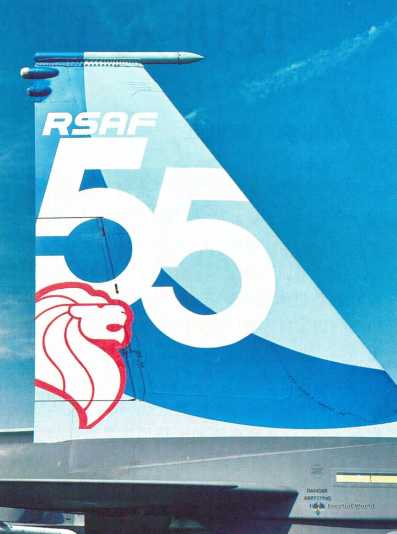
In addition to these types of ammunition, the F-15SG has also carried 500 pounds The former is a new type of weapon made by adding precision guidance components to the MK82 aerial bomb, which can attack moving targets on the ground from the air; the latter is a satellite-guided bomb improved on the basis of the MK83 aerial bomb, usually mounted on the middle hanging point of the F-15SG’s wing composite rack. In addition, there are reports that the Singapore Air Force has obtained Raytheon’s AGM-154A-1/C joint standoff weapon The United States has developed a JSOW, but has not made any public display.
According to foreign media reports, in order to further promote the implementation of the "Indo-Pacific Strategy", enhance relations with allies and partners in the Indo-Pacific region, and continuously strengthen regional military presence, the United States will further enhance the depth and breadth of cooperation with Singapore, including the upgrade of the F-15SG. For example, the United States will renovate the Andersen Air Force Base in Guam for the deployment and training of the Singapore Air Force’s F-15SG fighters. The United States will also upgrade the Singapore Air Force’s 12 F-15SG fighters and provide training for pilots to enhance the combat capabilities of the Singapore Air Force.
In addition, as a heavy multi-purpose fighter that has been equipped for more than 10 years, by today’s standards, the overall craftsmanship level of the Singapore Air Force’s F-15SG fighter is still at the advanced level of the world’s fourth-generation fighters. Due to the large use of composite materials and improved processing technology, coupled with the Singapore Air Force’s high maintenance level, the F-15SG fighter still looks very delicate.
Related reading
- 国产大飞机海外首秀:中国商飞C919和ARJ21飞行展示
- Domestic large aircraft overseas debut: COMAC C919 and ARJ21 flight demonstration
- 从美军B-52H战略轰炸机双机通场新加坡航展说起
- 近距离观察F-35A隐形战斗机
- 我进入了F-16D的座舱
- 新加坡航展上的萨博“鹰狮”JAS-39战斗机
- 我当上了苏-30的飞行员--苏-30MKM战机前的超强体验
- 中国的“老朋友”--来自冲绳的P-8A反潜巡逻机
- 又见C-17运输机
- 首次亮相新加坡航展的直-10ME
- 公开展示的“阿帕奇”武装直升机
- 静态展示的CH-47F“支努干”重型运输直升机
- KC-135下的漫步,不得不说的硬管加油装置
- 细看新加坡“紫菀”-30防空导弹
- 先进机型齐亮相---新加坡航展上的中航展台
- 混动装甲战车--新加坡“特雷克斯s5”轮式装甲车管窥
- 2024年新加坡航空展室内展台参观记


